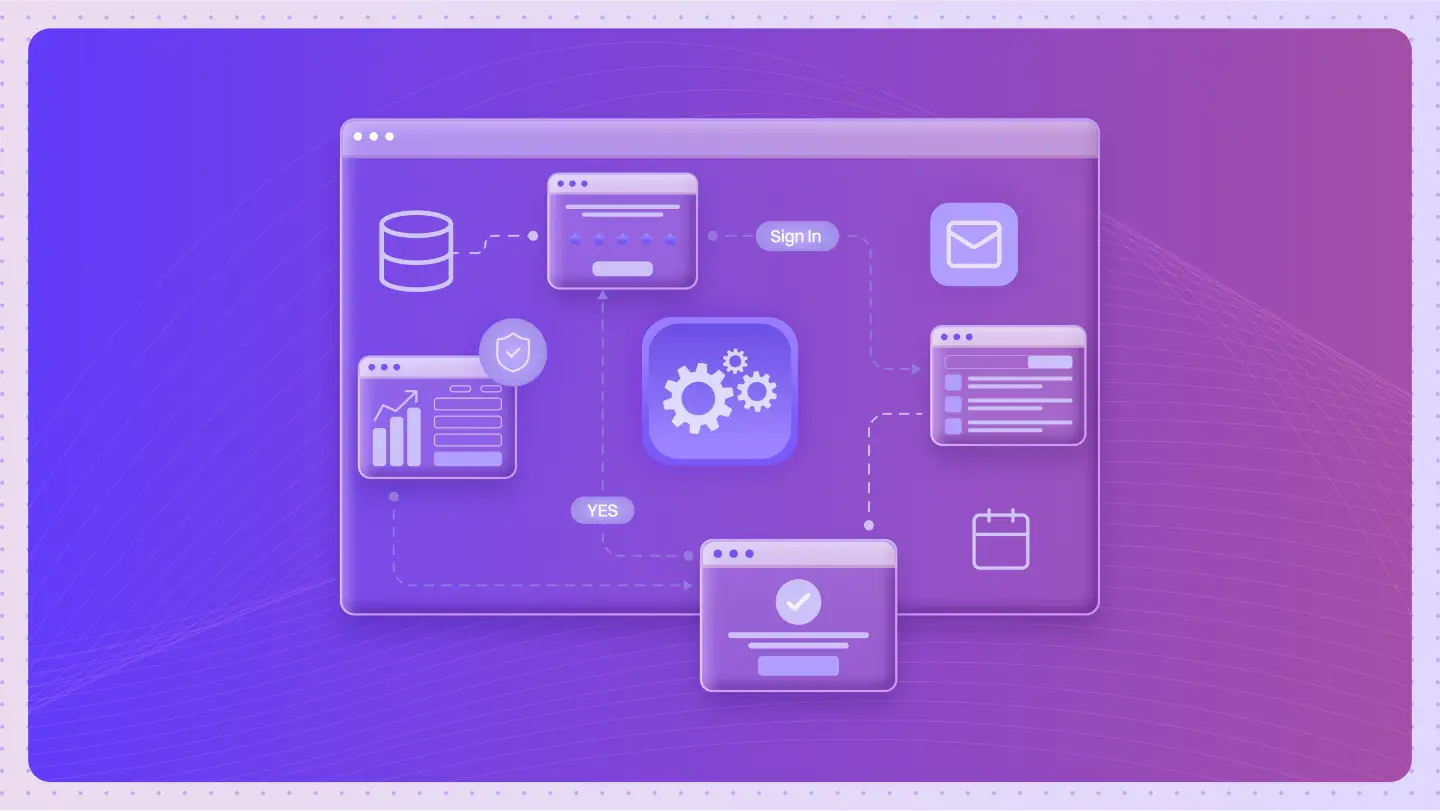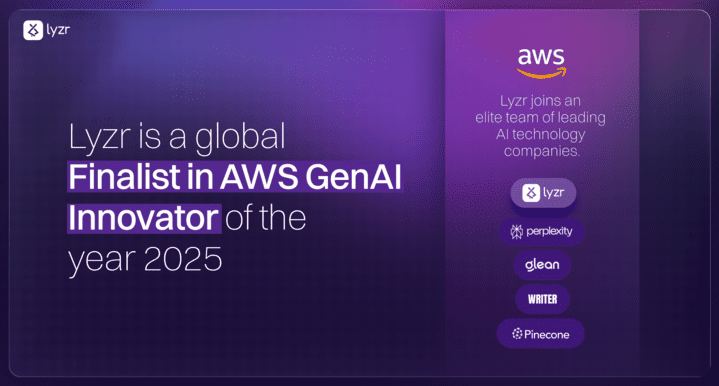Table of Contents
ToggleIn the world of artificial intelligence (AI), businesses are looking for agent frameworks that not only automate but also optimize at scale.
We’re excited to announce that Lyzr’s agent framework is now on AWS.
This combines Lyzr’s AI expertise of multi-agent systems with AWS’s scalable, secure cloud to give you the best of both worlds: deployable, customisable and future-proof AI agents.
Here’s an overview of how you can deploy your own autonomous AI agents on AWS with Lyzr.
First, let’s understand the platforms that Amazon offers for you to build multi agent systems.
About Amazon SageMaker
Amazon SageMaker is a machine learning (ML) service that lets you prepare data, build, train and deploy ML models efficiently. With fully managed infrastructure, SageMaker brings together a broad set of tools to enable high-performance, low-cost machine learning (ML) for any use case.
Lyzr’s AI agents, including our autonomous agents for customer service, sales and operational workflows, are now supported on Amazon SageMaker, one of the leading AI agent frameworks.
You can deploy these agents on a range of hardware configurations to suit your use case. This supports fine tuning so you can customize Lyzr’s agents to your business needs.
Whether you need an AI agent for real-time customer support or advanced sales automation, deploying Lyzr on SageMaker allows you to achieve high performance, scalability and flexibility.
Benefits of Lyzr on Amazon SageMaker:
- Scalability: With SageMaker’s scalable infrastructure, Lyzr agents can handle growing data volumes without performance degradation. By leveraging SageMaker’s various deployment options, such as Real-Time Inference, Batch Transform, and Asynchronous Inference, customers can choose the best option for their unique needs. For example, real-time inference allows Lyzr agents to handle dynamic customer queries, while batch processing enables the efficient handling of large data volumes for periodic analysis.
- Customisation: Fine tuning options so you can customize Lyzr agents to your business needs, so they’re optimized for the task at hand.
- Managed Infrastructure: SageMaker’s fully managed environment allows customers to deploy and scale Lyzr agents directly via API, integrating seamlessly into workflows without the burden of infrastructure management.
About Amazon Bedrock
If you want to deploy AI agents without managing infrastructure, Amazon Bedrock is the answer. Bedrock empowers you to easily build and configure autonomous agents that understand, interact, and act on user requests. With Bedrock, you can set up agents that handle complex workflows, seamlessly integrating with your company’s systems through API calls and enriching responses by querying external data sources. This allows you to create adaptable, intelligent agents that require minimal setup and maintenance, making automation accessible and scalable for any business need.Bedrock is a fully managed service that gives you access to foundation models from leading AI providers through a single, serverless API.
Now Lyzr’s AI agents can be integrated with Amazon Bedrock, including customisable models that can be fine tuned to your operational requirements.
Utilizing a multi agent framework, Lyzr’s AI agents can efficiently handle a variety of tasks, making them versatile and powerful tools for your business.
By leveraging Lyzr agents through Amazon Bedrock, businesses gain flexible, serverless AI capabilities. This setup allows Lyzr’s intelligent agents to operate within Bedrock’s environment, optimizing workflows such as real-time market monitoring and customer management. Integrating Lyzr with Bedrock provides an effective solution for on-demand, scalable AI support without the need for direct server management. The seamless integration with AWS services means you can get access to Lyzr’s AI capabilities without the complexity of deployment or infrastructure management.
Benefits of Lyzr on Amazon Bedrock:
- Serverless: Deploy Lyzr agents without managing servers or scaling.
- On-Demand Models: Access Lyzr agents through a simple API and get models that can be fine tuned for a specific task.
- Scalability: The serverless architecture means Lyzr agents will scale as your business grows.
Now that we’ve got an understanding of the infrastructure provided by AWS, let’s break down how you can deploy AI agents using Lyzr’s agent framework.
Lyzr’s Python Agent Framework for Multi Agent Systems
The Lyzr Python Agent Framework makes deploying, configuring, and managing AI agents on AWS easy by integrating key components that streamline these processes.
It provides a single interface for developers and businesses to interact with Lyzr agents on both SageMaker and Bedrock.
With the Python framework, you can set up workflows that integrate Lyzr agents into your existing AWS environment so they work seamlessly across departments and functions.
What Are the Features of Lyzr’s Agent Framework?
- Ease of use: Simple and intuitive interface to interact with AI agents.
- Customisation: Configure Lyzr agents to your business needs without dealing with the complexity of the underlying AI models.
- Cross Platform: Supports deployment on both SageMaker and Bedrock for flexibility and ease of use.
- Specialized Agents: Leverage specialized agents to handle specific tasks efficiently, enhancing the overall performance of your AI solutions.
Pricing and Deployment
Lyzr’s AI agent pricing is available on the AWS Marketplace for both SageMaker and Bedrock.
Lyzr has super agents like Jazon, Skott and Diane that are priced at $1999/month for unlimited usage while single task agents like Chat, Knowledge Search are priced at $399/month (link to chat agent: https://aws.amazon.com/marketplace/seller-profile?id=seller-4eeaplkekpgvu)
You can choose the model and deployment method that’s right for you and scale accordingly with minimal effort.
For more information or to speak to the Lyzr sales team about deployment get in touch.
Now let’s understand the purposes for which you can deploy AI agents for your business:
Use Cases for Lyzr AI on AWS for Complex Tasks
Deploying Lyzr AI on AWS means you can tackle complex tasks such as:
- Customer Service Automation: Lyzr agents can handle customer inquiries 24/7, provide consistent and efficient responses through Amazon Connect, reduce response times and operational costs.
- Sales Automation: With agents like Jazon, you can automate the entire sales outreach process from lead gen to follow up so your human sales teams can close deals.
- Competitor Analysis: Lyzr’s Kathy AI can monitor competitors and provide real-time updates so you can stay on top of market trends and make decisions faster.
- Content Marketing: With agents like Skott from Lyzr, you can automate all marketing initiatives for your team, from writing SEO optimized blogs to distribution across 15+ social media and marketing channels.
- Data Driven Decision Making: Lyzr agents on AWS can analyse massive datasets and extract insights for better business decision making, reduce human error and speed up processes.
So, now that you understand the what and why of Lyzr’s agent framework on AWS, let’s see how to get started with it.
Get started with Lyzr on AWS
Getting started with Lyzr’s AI agents on AWS is easy:
- Find Lyzr on AWS Marketplace: Go to the AWS Marketplace and search for Lyzr’s AI agent products under SageMaker or Bedrock. Chat Agent
2. Configure and Deploy: Use the Lyzr Python Agent Framework to configure the agents for your use case. AWS’s management tools make it easy to get up and running fast, facilitating seamless multi agent interactions.
3. Integrate with existing AWS Services: Leverage other AWS services like S3, Lambda or Redshift to enhance your Lyzr agents.
4. Monitor and Scale: Use CloudWatch to monitor your AI agents and scale as your business grows.
Summary: Future proof your business with Lyzr and AWS
Lyzr’s AI agent framework on AWS lets you deploy intelligent, autonomous agents that automate workflows, improve decision making and customer experiences.
With the flexibility of SageMaker and the simplicity of Bedrock you can now scale AI solutions to today’s fast pace of business.
By incorporating human feedback, Lyzr’s AI agents continuously improve, ensuring high-quality outputs and better decision-making.Get started today. Book a demo.
Book A Demo: Click Here
Join our Slack: Click Here
Link to our GitHub: Click Here




